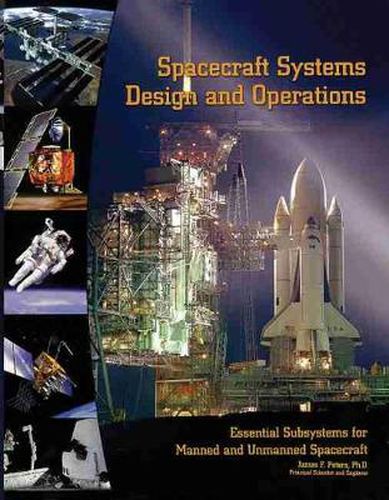Readings Newsletter
Become a Readings Member to make your shopping experience even easier.
Sign in or sign up for free!
You’re not far away from qualifying for FREE standard shipping within Australia
You’ve qualified for FREE standard shipping within Australia
The cart is loading…






This title is printed to order. This book may have been self-published. If so, we cannot guarantee the quality of the content. In the main most books will have gone through the editing process however some may not. We therefore suggest that you be aware of this before ordering this book. If in doubt check either the author or publisher’s details as we are unable to accept any returns unless they are faulty. Please contact us if you have any questions.
AcknowledgmentsThis text is dedicated to those who work in the space industry as well as the future generations who will follow. I would like to thank the many people and organizations that assisted me with collecting the research data and validating the technical content. Finally, special thanks goes to my wife, Brenda and daughter, Keirnan for allowing me the time needed to complete this project.
AbstractThis textbook focuses on spacecraft operations and the design of the critical subsystems (Structures and Mechanisms, Guidance, Navigation and Control, Propulsion and Motion Control, Electrical Power, Thermal Control, Communication and Tracking, Command and Data Handling, and Environmental Control and Life Support) needed to develop a manned or unmanned spacecraft. A comprehensive overview of each critical subsystem is included for the Space Shuttle and International Space Station. In addition, photographic images illustrate many of the hardware components that comprise these systems.
Previous space flight data provides a historical prospective on the importance of each critical subsystem and the consequence of a system failure. The major system requirements, operation functions and integration trades for each critical subsystem area are addressed with respect to performance, design margin, operations and cost. In addition, alternative design approaches for each essential subsystem are provided along with application examples from current space vehicles such as the International Space Station, Space Shuttle and various satellite systems. Understanding the major trades in each area, as well as the different design philosophies and alternatives, provides the knowledge needed to develop and evaluate a preliminary space vehicle design and operations concept.
$9.00 standard shipping within Australia
FREE standard shipping within Australia for orders over $100.00
Express & International shipping calculated at checkout
This title is printed to order. This book may have been self-published. If so, we cannot guarantee the quality of the content. In the main most books will have gone through the editing process however some may not. We therefore suggest that you be aware of this before ordering this book. If in doubt check either the author or publisher’s details as we are unable to accept any returns unless they are faulty. Please contact us if you have any questions.
AcknowledgmentsThis text is dedicated to those who work in the space industry as well as the future generations who will follow. I would like to thank the many people and organizations that assisted me with collecting the research data and validating the technical content. Finally, special thanks goes to my wife, Brenda and daughter, Keirnan for allowing me the time needed to complete this project.
AbstractThis textbook focuses on spacecraft operations and the design of the critical subsystems (Structures and Mechanisms, Guidance, Navigation and Control, Propulsion and Motion Control, Electrical Power, Thermal Control, Communication and Tracking, Command and Data Handling, and Environmental Control and Life Support) needed to develop a manned or unmanned spacecraft. A comprehensive overview of each critical subsystem is included for the Space Shuttle and International Space Station. In addition, photographic images illustrate many of the hardware components that comprise these systems.
Previous space flight data provides a historical prospective on the importance of each critical subsystem and the consequence of a system failure. The major system requirements, operation functions and integration trades for each critical subsystem area are addressed with respect to performance, design margin, operations and cost. In addition, alternative design approaches for each essential subsystem are provided along with application examples from current space vehicles such as the International Space Station, Space Shuttle and various satellite systems. Understanding the major trades in each area, as well as the different design philosophies and alternatives, provides the knowledge needed to develop and evaluate a preliminary space vehicle design and operations concept.